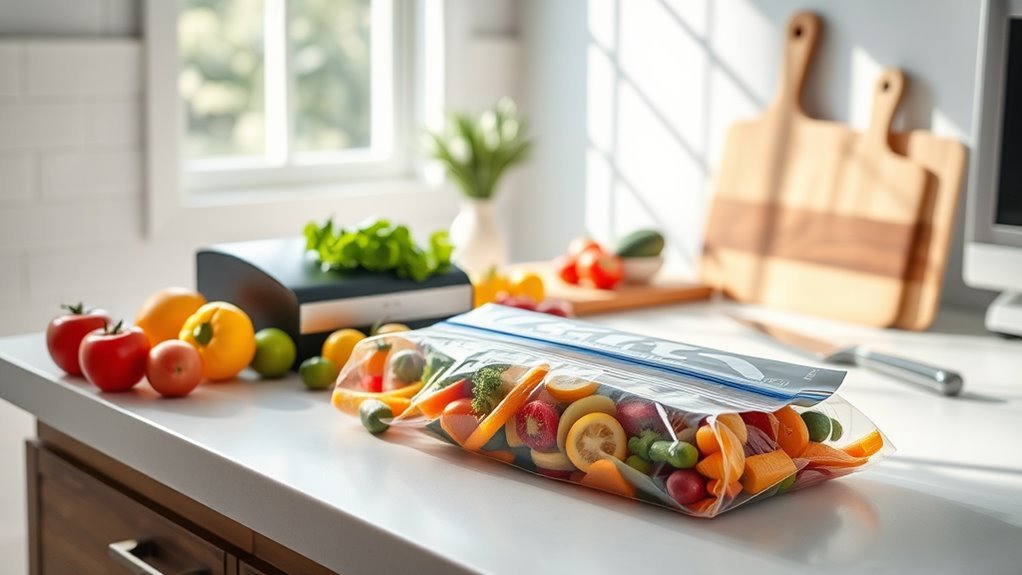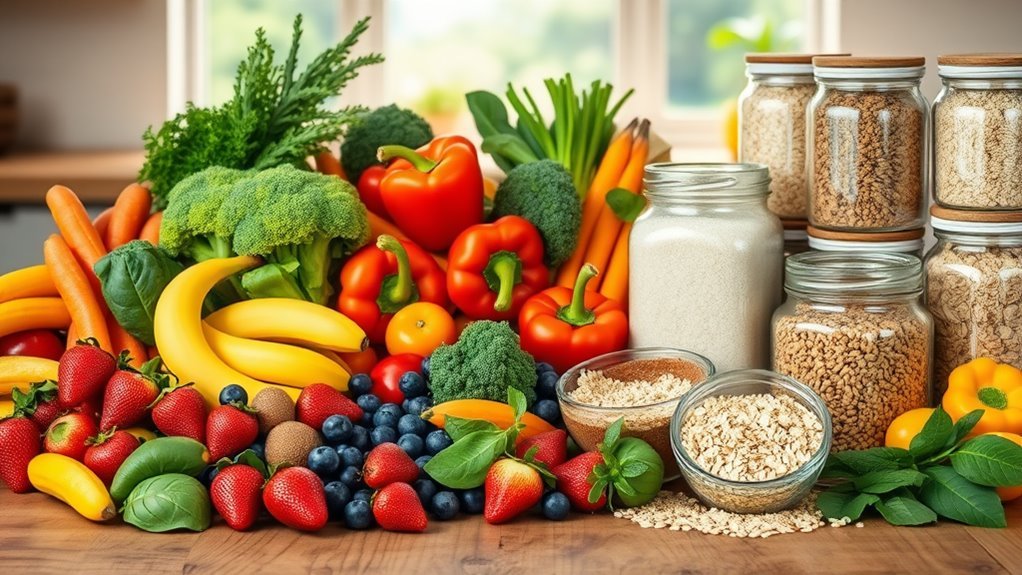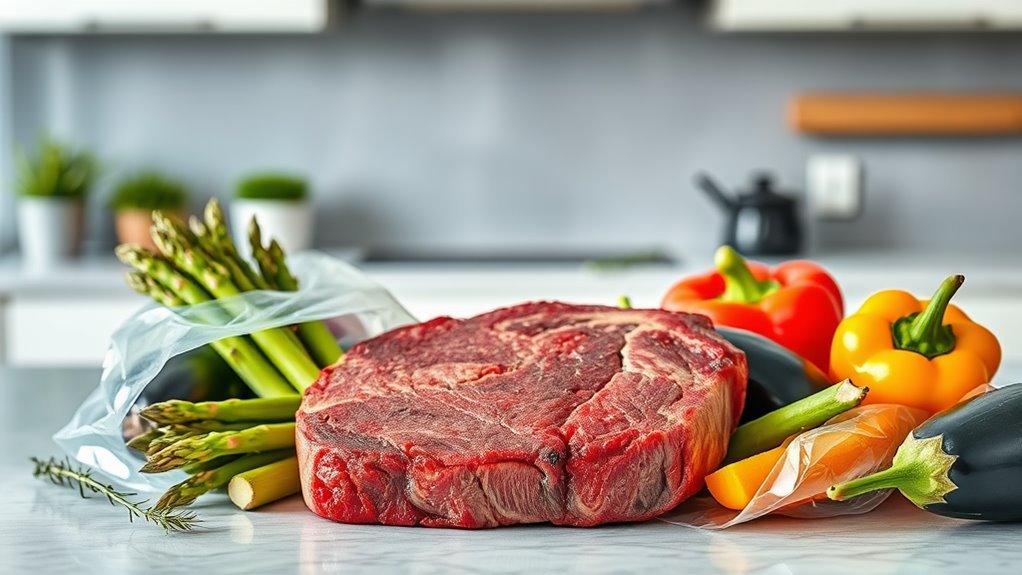The Chef's Guide to Vacuum Sealing: Revolutionize Your Food Preservation

As a chef who's always looking for ways to maximize freshness and minimize waste, I've become a passionate advocate for vacuum sealing. This revolutionary preservation method has transformed my kitchen workflow and food storage capabilities, and today I'm sharing why it should be an essential technique in your culinary arsenal too.
Vacuum sealing isn't just another kitchen trend—it's a scientifically-proven preservation method that extends shelf life by 3-5 times compared to conventional storage. By creating an airtight environment, we dramatically slow down natural decomposition, preserving everything from tender summer berries to premium dry-aged steaks with remarkable efficiency.
Why Oxygen Is Your Food's Worst Enemy
Understanding food preservation starts with recognizing oxygen as the primary catalyst for spoilage. That innocent molecule we breathe is actually a powerful agent of food degradation through multiple mechanisms:
- Microbial Growth: Oxygen creates the perfect environment for aerobic bacteria and mold to multiply
- Oxidation: Causes rancidity in fats and oils, developing those stale, off-flavors
- Enzymatic Browning: Triggers those unappetizing brown spots on cut fruits and vegetables
- Nutrient Degradation: Gradually reduces vitamins and other beneficial compounds
By removing oxygen through vacuum sealing, we essentially pause these deterioration processes. It's like hitting the pause button on food decay—a culinary time machine that preserves quality, flavor, and nutritional value.
The Remarkable Benefits of Vacuum Sealing
After years in professional kitchens and extensive experimentation at home, I've documented these impressive advantages of vacuum sealing:

- Dramatically Extended Shelf Life: Foods maintain freshness 3-5 times longer
- Superior Texture Preservation: Prevents freezer burn and moisture loss
- Enhanced Flavor Retention: Locks in aromatics and prevents flavor transfer
- Reduced Food Waste: Portion and preserve foods before they spoil
- Space Efficiency: Vacuum-sealed packages take up significantly less space
- Improved Meal Prep: Prepare ingredients or entire meals in advance
Best Candidates for Vacuum Sealing
Not all foods respond equally to vacuum sealing. Through extensive testing, I've identified the optimal candidates and their impressive shelf-life extensions:
| Food Category | Standard Storage Life | Vacuum Sealed Life | Notes |
|---|---|---|---|
| Meat & Poultry | 6-12 months frozen | 1-3 years frozen | No freezer burn, maintains texture |
| Fish & Seafood | 3-6 months frozen | 1-2 years frozen | Prevents fishy odors from spreading |
| Hard Cheeses | 1-2 weeks refrigerated | 4-8 months refrigerated | Prevents mold growth |
| Berries & Fruits | 1-2 weeks refrigerated | 1-2 months refrigerated | Flash freeze first for best results |
| Coffee & Spices | 2-3 months | 1-2 years | Preserves volatile aromatics |
| Nuts & Seeds | 3-6 months | 1-2 years | Prevents rancidity |
Pro Tip: I avoid vacuum sealing soft cheeses, raw mushrooms, fresh garlic, and delicate herbs as their textures can be compromised under pressure. For more information on food safety considerations with vacuum sealing, check out this guide on bacteria growth in vacuum sealed foods.
Essential Equipment for Successful Vacuum Sealing
For home chefs serious about food preservation, these are my recommended tools:
- Vacuum Sealer Machine: Choose between countertop models (more powerful, better for frequent use) or handheld versions (compact, more affordable)
- Quality Bags & Rolls: Look for BPA-free, textured options that create superior seals
- Specialized Attachments: Jar sealers for preserving dry goods, marinators for infusing flavors
- Bag Cutters: For creating custom-sized bags from vacuum sealer rolls
The initial investment in quality equipment pays dividends through reduced food waste and extended shelf life. I recommend starting with a mid-range countertop model and high-quality bags.
Chef's Techniques for Perfect Vacuum Sealing

After years of professional experience, I've developed these best practices for maximizing vacuum sealing effectiveness:
- Pre-freeze Moist Items: Flash freeze juicy foods for 1-2 hours before sealing to prevent liquid from interfering with the seal
- Leave Adequate Headspace: Allow at least 3 inches between food and the bag opening for a proper seal
- Double-seal Valuable Items: Create two seal lines for expensive ingredients or long-term storage
- Label Comprehensively: Include contents, date, and basic preparation instructions
- Implement FIFO: (First In, First Out) Organize your storage to use older items first
For delicate items like pastries or chips, use the "pulse" vacuum function if available to prevent crushing. For marinades, the vacuum process actually accelerates flavor penetration—15 minutes under vacuum equals hours of traditional marinating!
The Chef's Final Word
Vacuum sealing has revolutionized my approach to food storage, meal preparation, and reducing kitchen waste. By removing air and creating oxygen-free environments, we harness the science of preservation to maintain peak freshness, texture, and flavor. The results are undeniable: extended shelf life, preserved nutritional value, and significant cost savings through reduced food waste.
Whether you're a passionate home cook or simply looking to maximize your grocery budget, vacuum sealing offers remarkable benefits that quickly justify the initial investment. Start with quality equipment, master the techniques, and watch as this simple technology transforms your approach to food preservation.
For a comprehensive guide on getting started with vacuum sealing, visit Mastering Your Vacuum Sealer: A Beginner's Guide.
No comments:
Post a Comment